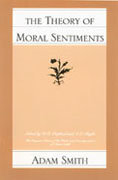Question
On Sept 18, 2015 Firstpost reported(Links to an external site.) : The Delhi government's directive to cap the cost of laboratory tests for dengue has
On Sept 18, 2015 Firstpost reported(Links to an external site.):
The Delhi government's directive to cap the cost of laboratory tests for dengue has upset owners of private hospitals and diagnostic clinics. According to the directive, private healthcare establishments can charge a maximum of Rs 600 for NS1 antigen and dengue antibody tests. Platelet count tests should cost no more than Rs 50.
Accusing the government of announcing the figure without taking them into confidence, the private players maintain that the cap is 'unrealistic' since it does not cover even the cost of raw material used. They say they are not being provided with extraction kits and other agents used for laboratory examination on subsidized prices.
Meanwhile, dengue has assumed an epidemic proportion with 1,900 cases and 16 confirmed deaths reported till September 17. Private laboratories are currently charging anywhere between Rs 900 and Rs 2000 for the dengue test while checking platelet count costs about Rs 200.
(Source: "As dengue assumes epidemic proportion, Delhi govt and private players bicker over test price cap", Firstpost.com, 18 Sep 2015.)
Suppose that the (short-run) demand and supply of dengue tests in Delhi is as given below:
Demand: P = 2600 - 0.001Q
Supply: P = 200 + 0.001Q
where P is the price in Rupees/test, and Q is quantity measured in number of tests per month.
Then consider the imposition of a price ceiling of 600 Rupees/test. Which of the following statements is/are true?
Which of the following statements is true?
(There may be more than one correct answer.)
Group of answer choices
The deadweight loss from the price ceiling would be larger if demand were more inelastic (around the equilibrium point prior to the price-ceiling)
The deadweight loss from the price ceiling would be larger if supply were more inelastic (around the equilibrium point prior to the price-ceiling)
The deadweight loss from the price ceiling would be larger if supply were more elastic (around the equilibrium point prior to the price-ceiling)
Deadweight loss would be zero if supply were perfectly inelastic (around the equilibrium point prior to the price ceiling)
Step by Step Solution
There are 3 Steps involved in it
Step: 1

Get Instant Access to Expert-Tailored Solutions
See step-by-step solutions with expert insights and AI powered tools for academic success
Step: 2

Step: 3

Ace Your Homework with AI
Get the answers you need in no time with our AI-driven, step-by-step assistance
Get Started


